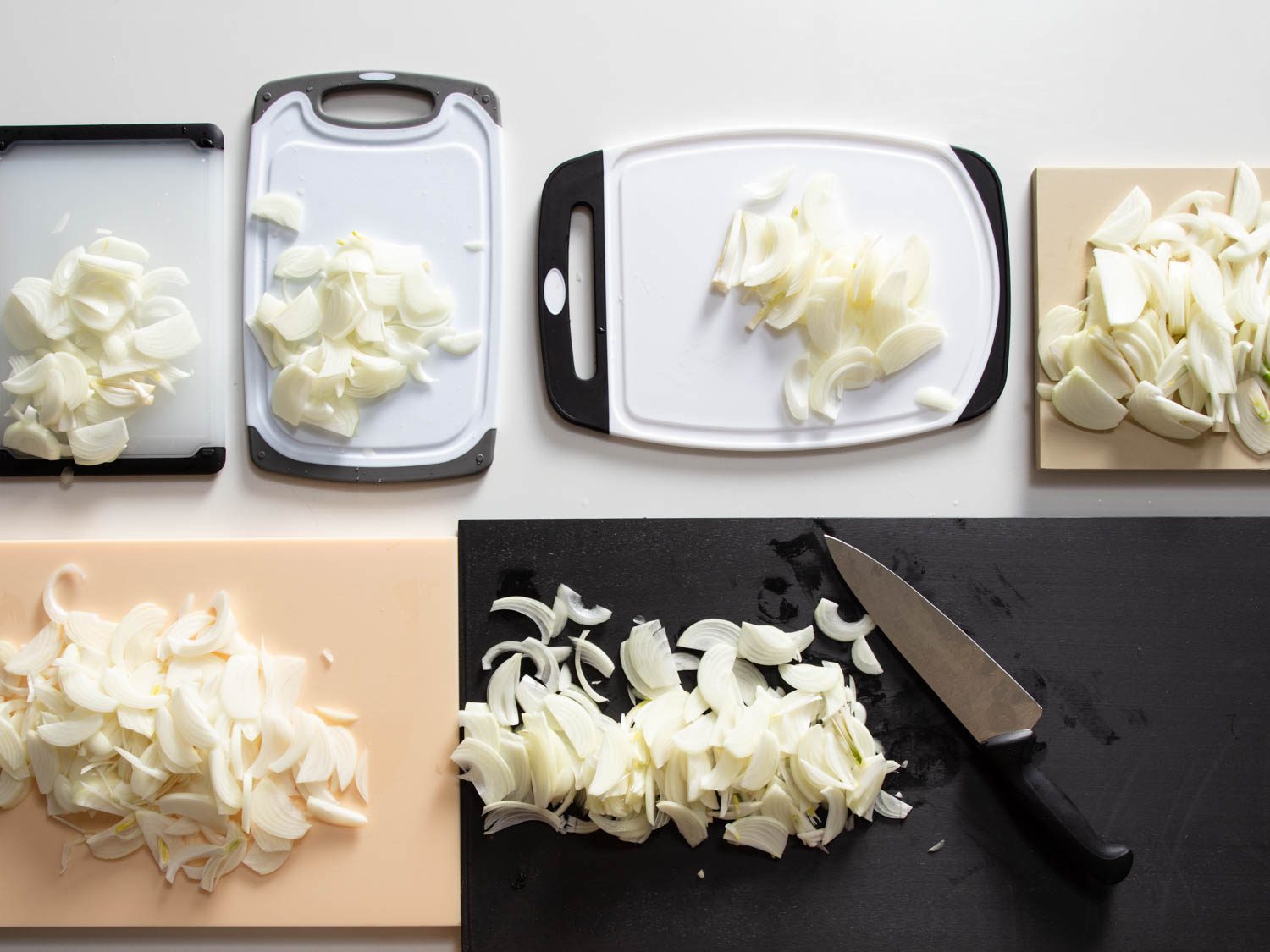
[Photographs: Vicky Wasik]
For all the attention cooks give to their knives, it’s a good idea to spend just a little time thinking about what kind of surface those knives are being used on. Cutting board options abound, including many different types of wood, composite materials, plastics, and (*shudder*) glass. For this review, we’ve examined plastic cutting boards to find our favorites—the most durable and gentlest on your knives. We’re currently working on a wood cutting board review, so stay tuned for that in the coming months. Read on for our top picks, testing methodology, results, and a (brief) discussion of wood versus plastic cutting boards.
Our Favorites, at a Glance
The Best Plastic Cutting Board: OXO Good Grips Cutting Board
As basic plastic cutting boards go, OXO’s are hard to beat. They’re incredibly durable, yet still kind to a knife blade, leaving it sharp even after heavy use. Thin enough to store easily but thick and sturdy enough not to bend and warp, OXO’s boards kept their shape after multiple high-heat spins through a dishwasher. They also come in a range of nice sizes, with the small and medium boards sold as a pair (linked below), while OXO’s large “Cutting and Carving” board is offered separately.
The Best High-End Plastic Cutting Board: Yoshihiro Hi-Soft Cutting Board
Of all the plastic cutting boards tested for this review, Yoshihiro’s Hi-Soft cutting boards felt closest to wood; cutting on them is pure pleasure. They’re also very gentle on knives, but you need to be more careful working with these boards: aggressive and sloppy knife work will do damage to the softer thermoplastic material. They’re also not dishwasher safe, which means hand-washing is your only option.
Which Cutting Board Material is Best: Wood or Plastic?
For a while, most folks just assumed plastic cutting boards were more sanitary than wood. After all, they’re nonporous and, in theory, easier to sanitize. The reality is more complicated. Plastic is less porous than wood and so, when new, it’s easier to sanitize. But with time, as scratches develop—especially deep ones where bacteria can hide and fester—plastic becomes increasingly difficult to keep clean. Eventually, a plastic board needs to be thrown out.
Wood, meanwhile, is more porous, but studies have shown that fine-grained woods like maple (which are some of the better options for cutting boards) pull bacteria down into the board via capillary action, where the bacteria are trapped and eventually killed. Hard wood can also take more of a beating before surface scratches become a problem. Plus, it can be sanded to reset the surface to good-as-new condition, something you can’t do with plastic.
Plastic boards are still useful to have in the kitchen, though. I tend to grab them for anything that’s going to be messy—whether it’s raw meat or fish that I want to cut into smaller pieces or foods like beets that stain everything they touch—or when I just need a small board for something quick, like halving a lemon. Plastic boards wash up quickly and don’t require maintenance, that wood does to stay in good shape, like frequent oiling.
Glass and marble, in case you don’t know, are unacceptable cutting board materials. They ruin knives practically on contact, and have a deeply unpleasant feel; a knife on glass is the kitchen equivalent of fingernails on a blackboard.
The Criteria: What We Look for in a Great Plastic Cutting Board
Plastic cutting boards should be reasonably durable—especially since deep gouges and scratches render them unsafe from a food-safety standpoint. But they shouldn’t be so indestructible that a sharp knife grinds to a prematurely dull edge, as it does on glass. The ideal plastic board offers a balance between hardiness and gentleness.
Plastic cutting boards should not be so smooth that slippery foods glide across them as if on ice. That makes cutting dangerous. Ideally, the board has enough texture on its surface that slithery foods stay still as you cut them, but not so much that the board feels rough to the touch.
Board size options are also important. Small boards can be handy for quick and easy tasks—cutting up a lemon or lime for wedges, or quickly slicing a single onion, for example. But you also want a larger board so there’s enough space to accommodate larger quantities of food—you don’t want things piling up and spilling off the edges. Some of the plastic cutting board options out there only offer small and medium boards, leaving you in the lurch for the kind cutting board you’d want for, say, butchering a chicken. Speaking of size, rubber grips on the edges and cutouts for handles are welcome—as long as they don’t reduce the useful work area too much.
Being able to toss a plastic cutting board into the dishwasher is certainly a plus, so it’s a feature we factored in when evaluating the cutting boards in this test. But we didn’t consider it to be a requirement. Some of the boards that imitate wood best in terms of how they feel under the knife are made from plastics that would warp in a hot dishwasher. A wood-like feel is a pretty nice thing, so we’re willing to accept a no-dishwasher policy if the board really delivers on a tactile level.
As for stain-resistance, it wasn’t anywhere near the top of our list. Our priorities are performance, not aesthetics, so we made sure the boards in this review met (and, hopefully, surpassed) the above criteria before even considering staining. As it turned out, we’d eliminated all the boards except for the winners before staining could even be tested. That said, we’ve been using the winning OXO plastic boards for years, both at home and in the Serious Eats test kitchen, and while they do lose their bright white gleam after a while, we haven’t found staining to be an issue.
The Testing
We ran the plastic cutting boards in this review through a series of tests to get a sense of how they felt under the knife, how slippery they were, how durable they were, and how gentle they were on a knife’s blade. We also made sure all of the boards that claimed to be dishwasher safe really were.
A quick scan of cutting boards on websites like Amazon quickly reveals just how many products are out there. We couldn’t possibly test them all. For this review, we limited the testing group to the plastic boards that competing review sites looked at, as well as the top sellers with good reviews on sites like Amazon. In addition, we included a couple lesser-known Japanese boards that we knew of through professional experience.
We also opted not to include some popular options, based on direct prior experience. Those include flexible cutting board mats, which we’ve found to be far too hard to keep from sliding around on the countertop, and also industrial high-density polyethylene boards, which we find to be too hard and, often, too roughly textured.
Slicing Onions
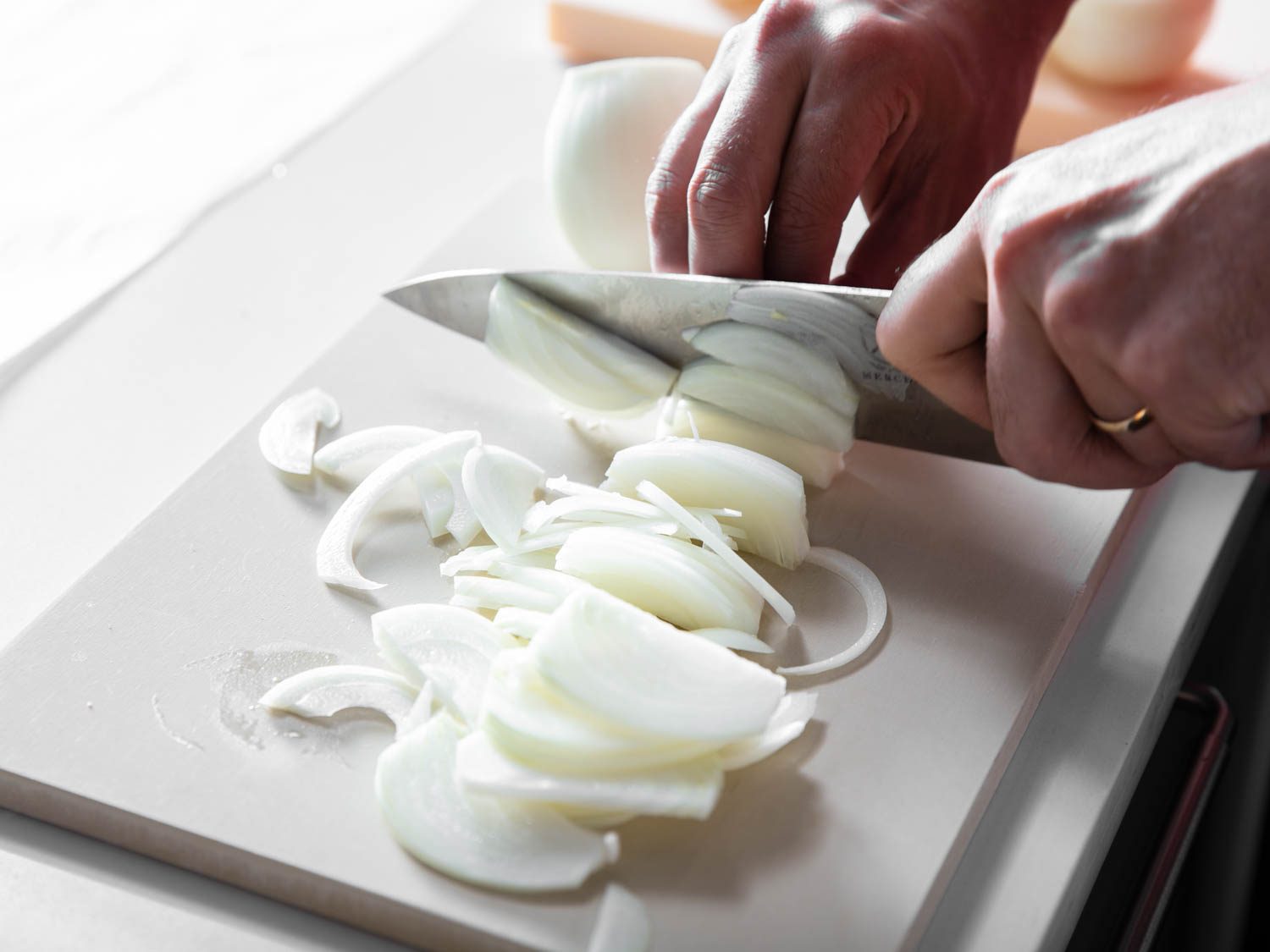
A basic task like slicing an onion is a great way to get a sense of how a work surface feels under the knife. Some plastic cutting boards are unpleasantly hard, making loud clacking sounds if the knife even gently taps them, and offering no give or shock absorption. Not that a cutting board should be on the receiving end of abusive knife strokes, but a little give is nice, more closely emulating the pleasant tactile response of a natural material like wood.
After this quick test, we had a much better sense of which boards we liked cutting on, and which we didn’t; not enough to eliminate any of the contenders, but certainly enough to put some of them on the ropes.
Slicing Squid
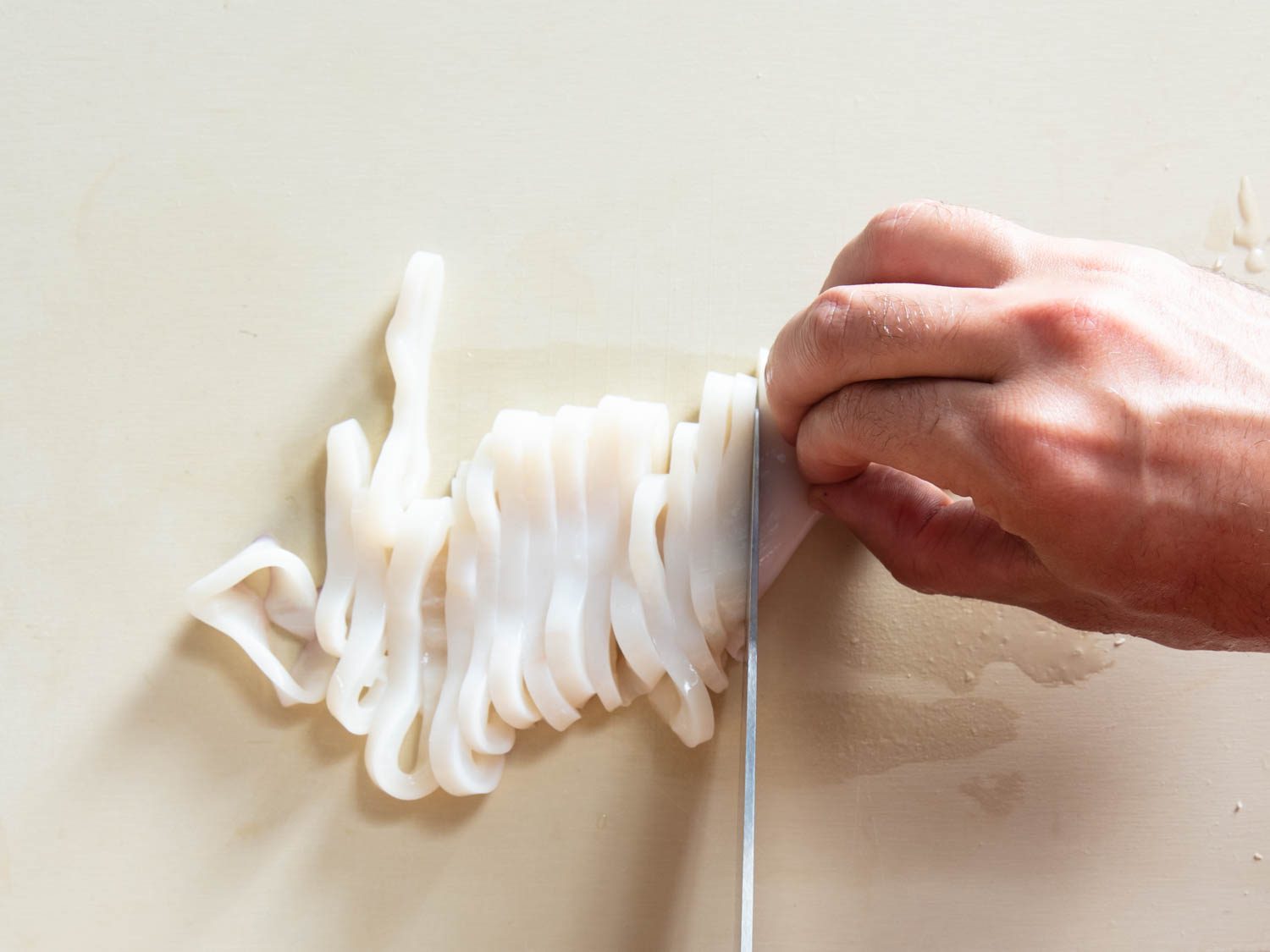
Raw meats and fish can be slippery, and an overly smooth cutting board surface can make matters much worse. Trying to slice a slippery food on a slick surface isn’t just frustrating—it’s legitimately dangerous. If foods slide around excessively, you’re that much more likely to slip and cut yourself by accident.
To test this, we sliced slithery squid into rings on each board. After the onion slicing test, this one was enough to bump a couple cutting boards that were both too hard and too slick from the running.
Dishwasher Test
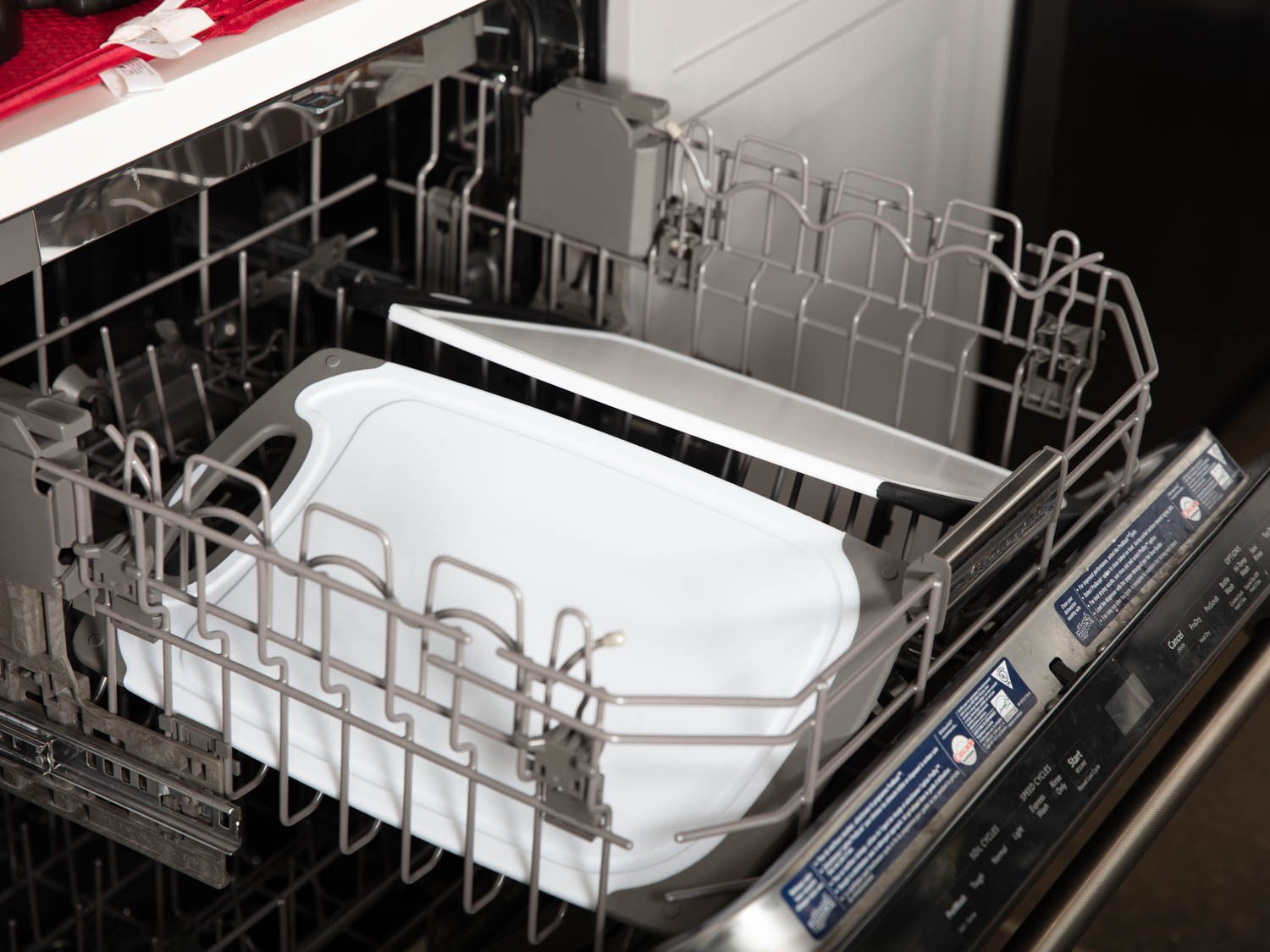
We respected those boards that didn’t claim to be dishwasher-safe by not putting them in the dishwasher. Fair enough—if they could win on other fronts, they were still in the running. But any board that claimed to be dishwasher-safe needed to live up to that.
In the past we’ve had OXO boards that, despite their dishwasher-safe claim, warped in the dishwasher. After an exchange with representatives from OXO some months ago, we learned that they’d since updated the board material to address this issue. Our testing for this review bore their claim out: Even after repeated cycles through our test kitchen’s dishwasher on its highest-heat, longest-duration setting, they kept their flat profile.
So did all the other dishwasher-safe boards we tested. None were eliminated based on this test.
Durability and Blade Damage Test
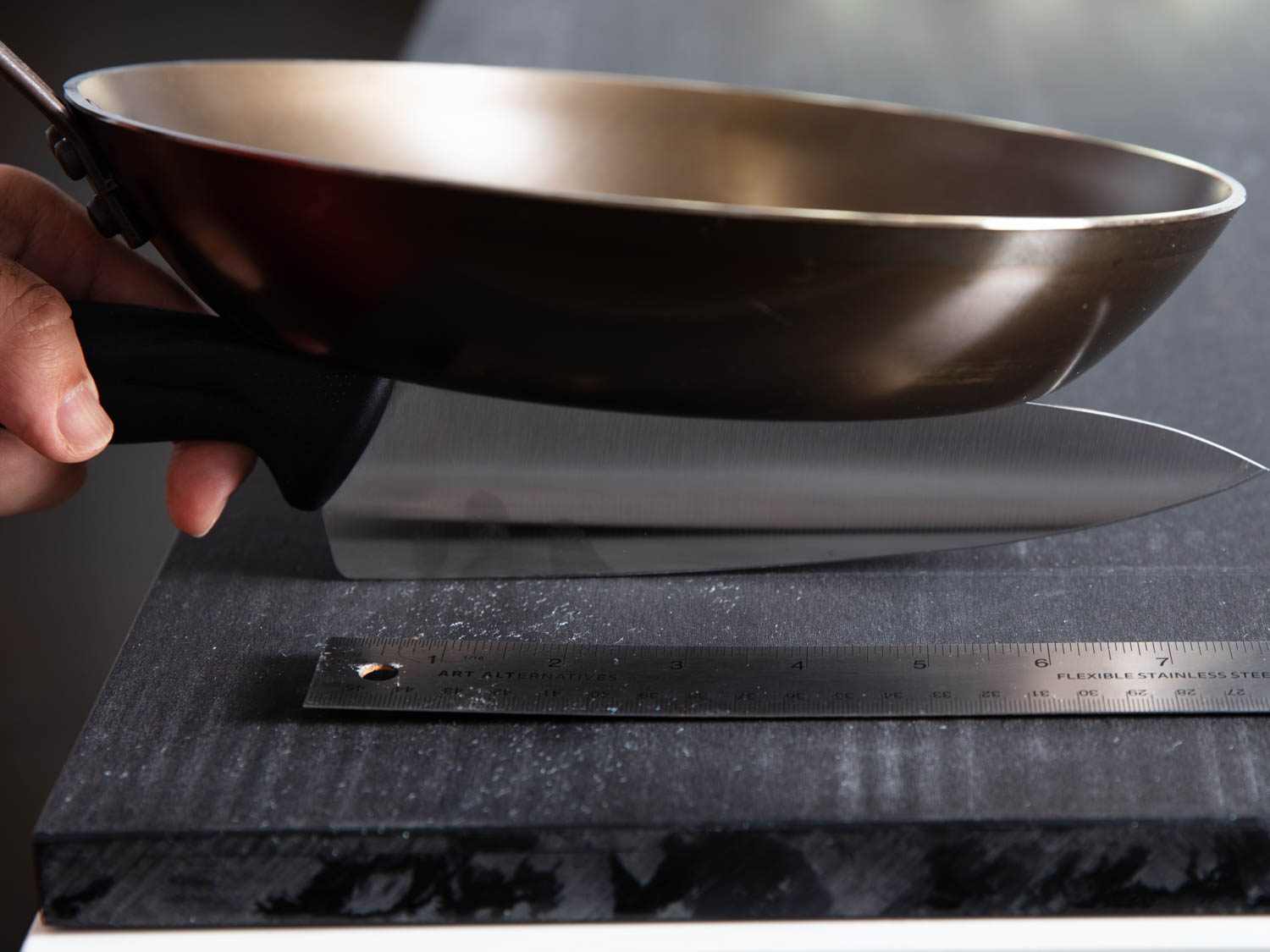
Testing a board’s durability and its effect on a blade is no easy thing. There’s no way to use the same knife to test all the boards, since re-sharpening the knife between each use wouldn’t guarantee that the knife was returned to its original state each time. It’s also not easy to apply a consistent pressure on each knife stroke, which would be the only fair way to run a durability and blade-dulling test.
Our solution was a bit of a hack, but we think it addressed these challenges well enough to make the results meaningful. To deal with the issue of guaranteeing a consistent and equal starting point for the blade used to test each board we bought a new knife for every board. This ensured that every test started with the same factory edge. The knife we used was the winning budget knife from our chef’s knife review, which is made by Mercer (we now have a lot of these knives).
To maintain consistent pressure, we balanced the same four-and-a-half-pound skillet on top of each knife, using our hand to simply draw the knife forward and backward while leaving the skillet to supply the downward pressure. How did we arrive at four-point-five pounds of pressure? We sat a cutting board on a scale and applied a slicing motion with a knife to measure what a “heavy” stroke weighs.
Since stroke length matters as well (one eight-inch stroke would take more of a toll on a blade than one four-inch stroke), we used a ruler to makes sure stroke lengths were consistent.
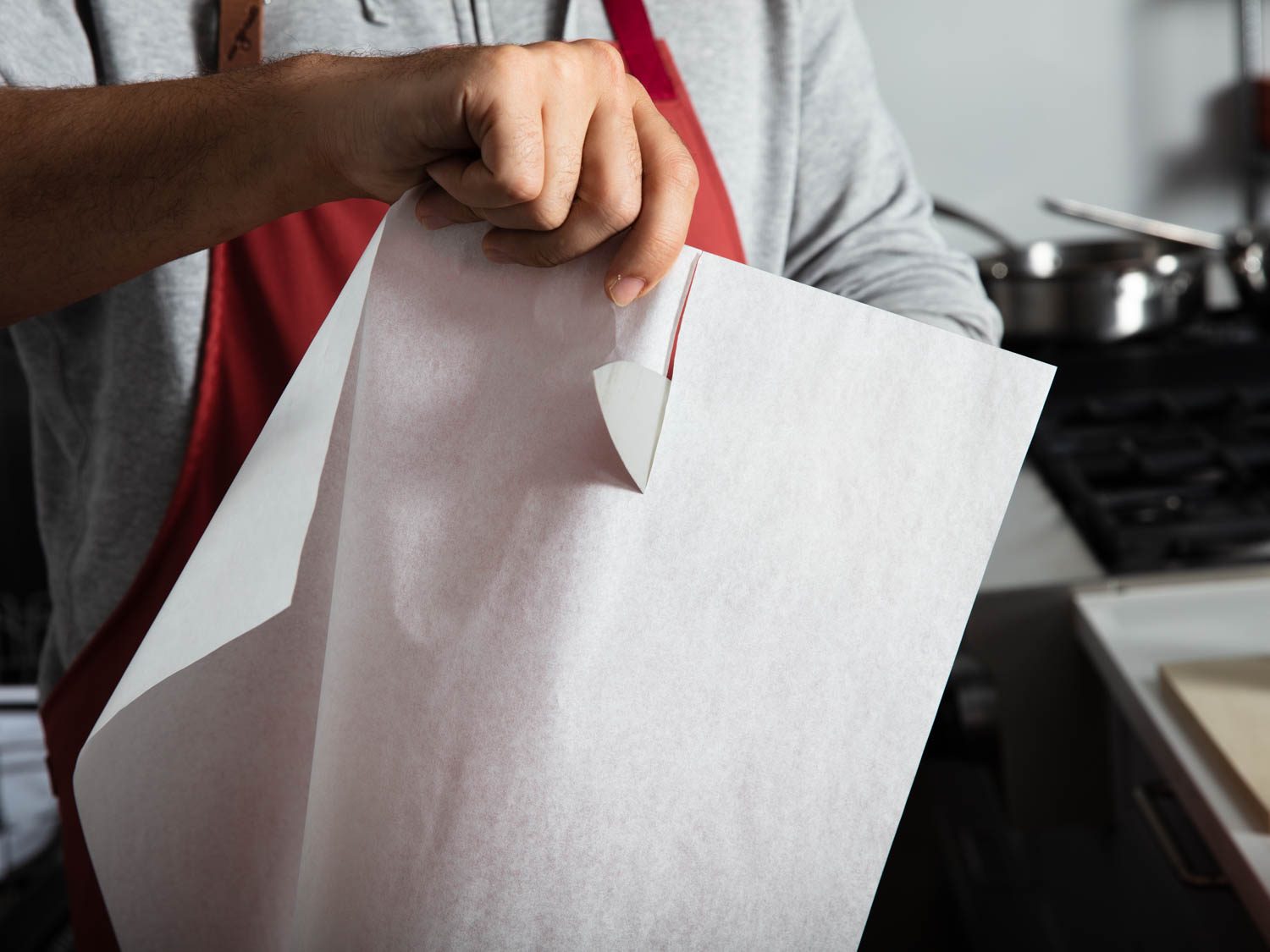
We checked each blade’s sharpness every 50 strokes by attempting to slice through parchment paper with it. This is hardly an exacting way to measure sharpness, but then again, there’s not really an alternative method unless you have some very, very expensive lab gear.
In this test, some blades were wrecked after just 50 strokes, which isn’t a good sign for how the board will treat your knives at home. Only a couple were still slicing cleanly after the 200th stroke, leaving us with a pretty clear idea of our winning boards.
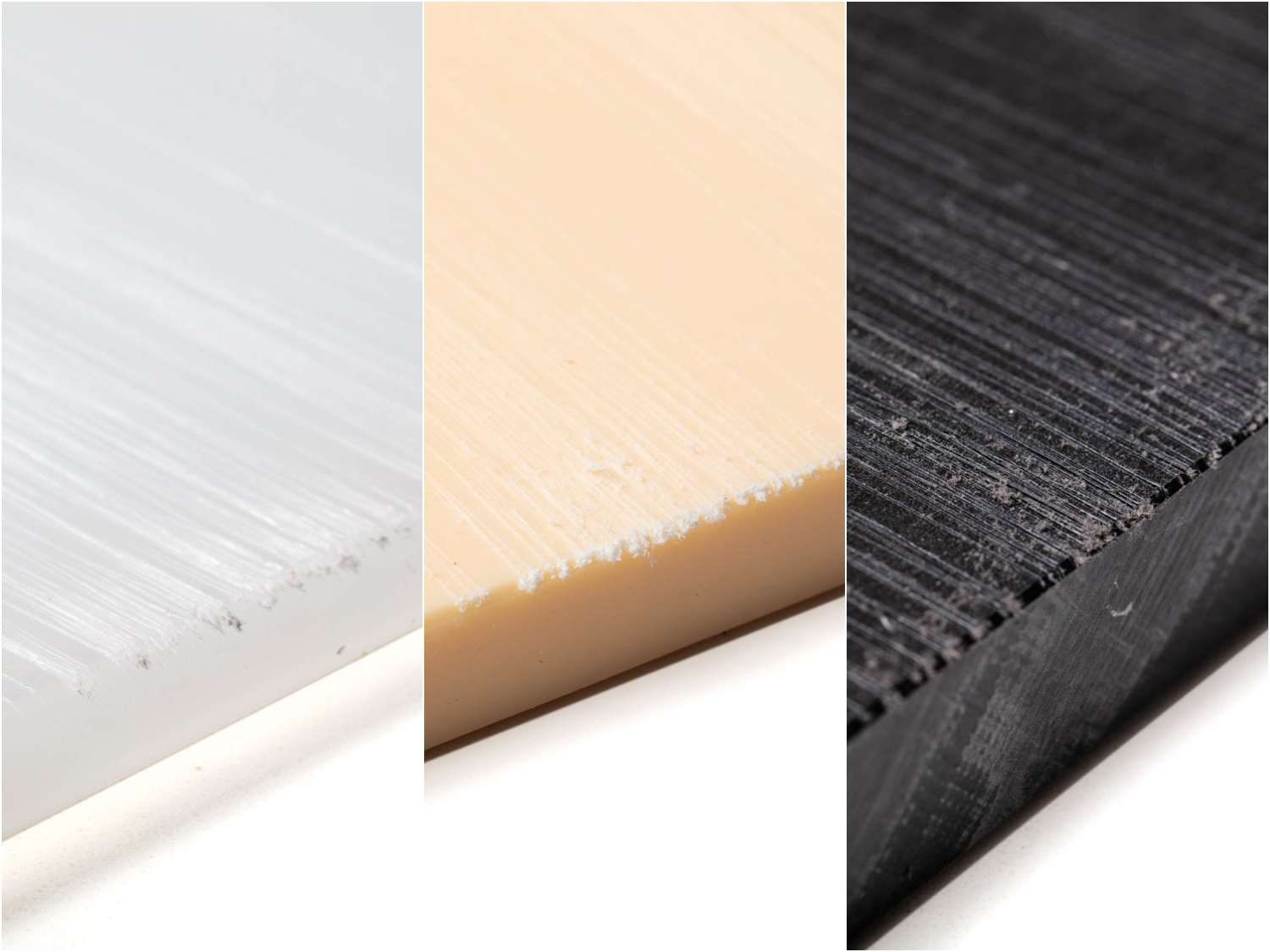
While it’s difficult to see in this photo, the OXO board at left took on the least damage, the Hi-Soft in the middle took on a moderate amount of damage, and Korin’s black cutting board took on fairly heavy damage.
On the durability side, the softer, more wood-like plastic boards took on deep scratches quickly. It didn’t take long to generate plastic dust and shavings from those boards. The OXO, which was one of the only remaining boards made from a harder plastic at this point in the testing, withstood damage better, mostly incurring light scratches that didn’t run as deep.
We eliminated any board that prematurely wore down the blade, as well as the ones that took on the worst damage. That said, we left one softer board in the running—our winning high-end pick—because it’s such an absolute pleasure to cut on, and because the kind of abuse we were subjecting that board to was in clear violation of the usage instructions.
Designed for high-end Japanese knives and intended for more gentle Japanese-style knife-work, the Yoshihiro Hi-Soft cutting board isn’t the kind of work surface you want to use for heavy-handed tasks, nor do the manufacturers say it should be used so recklessly. Because of this, we left it in the running, since we’re confident that with proper usage and care, it will perform as advertised.
How We Chose Our Winners
The winning boards offered a combination of durability, gentleness on knife edges, a range of sizes, a good feel, and more.
The Best Plastic Cutting Board: OXO Good Grips Cutting Board
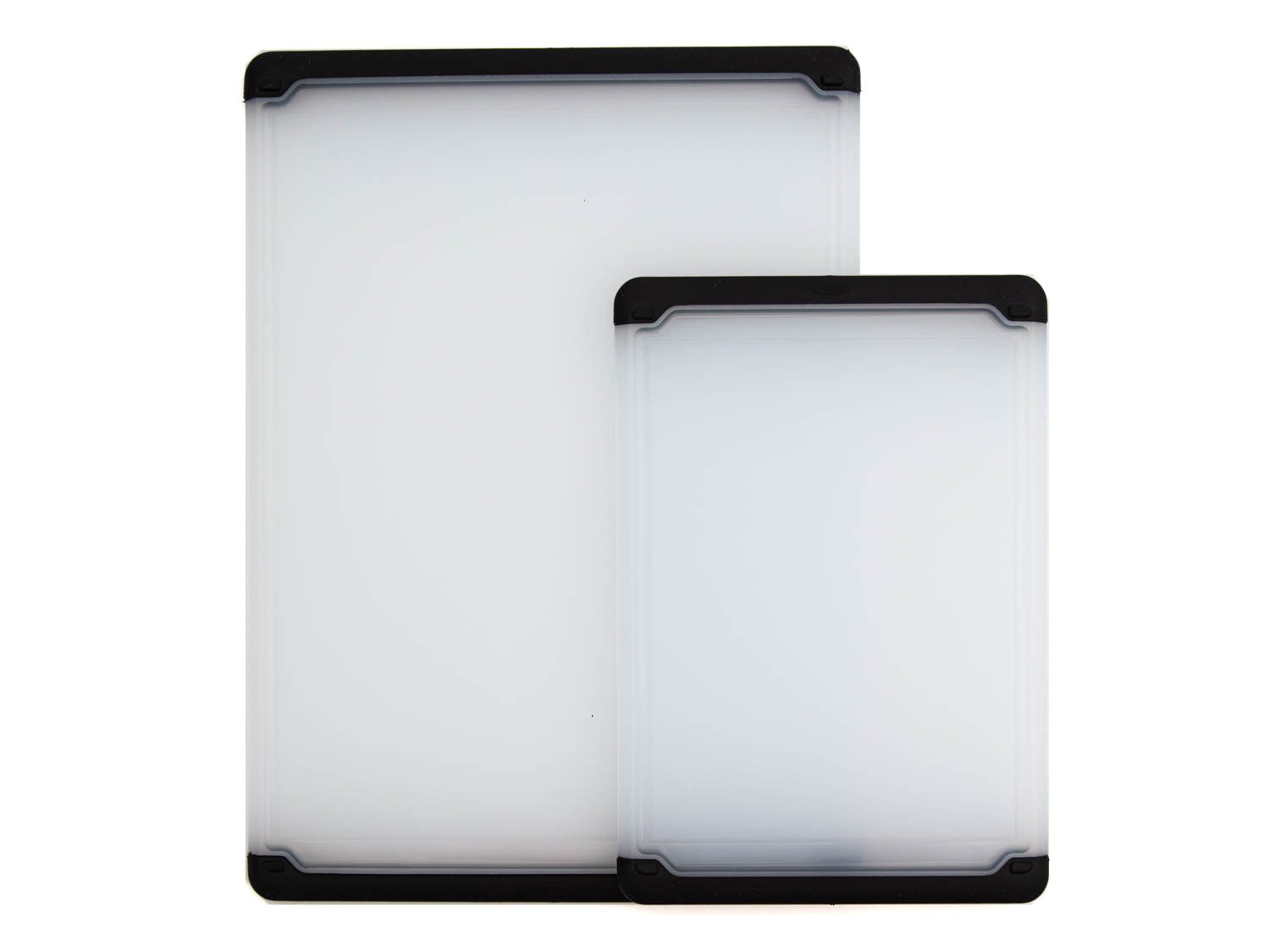
OXO’s plastic cutting boards are true workhorses, and we say this having built up years of experience using them both at work and home. They’re thin and lightweight, making them perfect for moving from storage to a countertop to the sink to a drying rack and back into storage once again with ease. They performed well in all our tests: they had a good feel under the knife, had sufficient slip resistance when cutting slithery foods like squid, they were durable and yet gentle on a knife’s edge—even after 200 four-and-a-half-pound strokes, the blade cut through parchment paper like butter.
Rubber-like trim on the short edges offers some grip on the countertop, reducing the amount the board slides around, though you may still need to stabilize it with a wet towel for some tasks. Those rubber grips are tapered at the edge, making it easy to pick the board up even when it’s resting flush on the countertop. Just as importantly, though, OXO has kept the trim minimal, leaving you with an abundance of usable work area. This wasn’t true of some of the other boards we tested, and their excessive rubber trim left frustratingly little space for actual cutting.
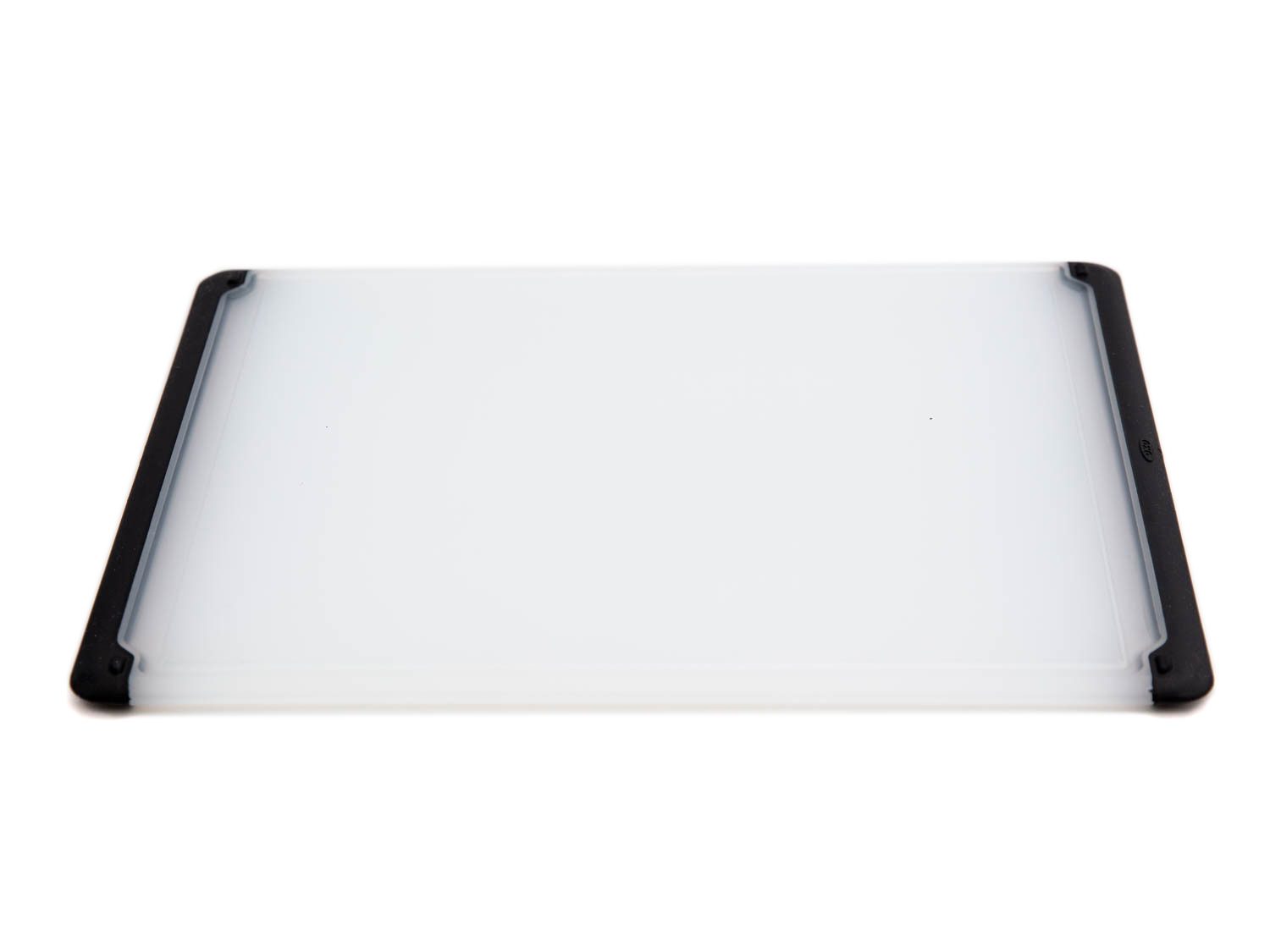
One side of OXO’s boards has a juice groove for catching liquids from meats, while the other is totally flat, ideal for cutting fruits and vegetables. Once again, Oxo managed to implement the juice groove without eating up too much of the work surface, which we appreciated.
And while we’d had trouble some years ago with Oxo’s dishwasher-safe claim for its plastic cutting boards, we found no issues after multiple trips through our dishwasher at its hottest, pot-scrubbiest setting, confirming what the company’s reps had told us several months ago: They’d updated the board material to properly withstand dishwasher temps.
One more thing we like about OXO’s plastic cutting boards is the available sizes. The small and medium boards (7.25- by 10.5-inches and 10.5- by 14.5-inches, respectively) come as a set and are linked to below. They’re good for smaller tasks and quick cleanup. The larger “Carving and Cutting” board, sold separately, offers plenty of space for larger meats and quantities of fruits and vegetables with its generous dimensions of 14.5- by 21-inches. We think it’s worth owning all three sizes.
The Best High-End Plastic Cutting Board: Yoshihiro Hi-Soft Cutting Board
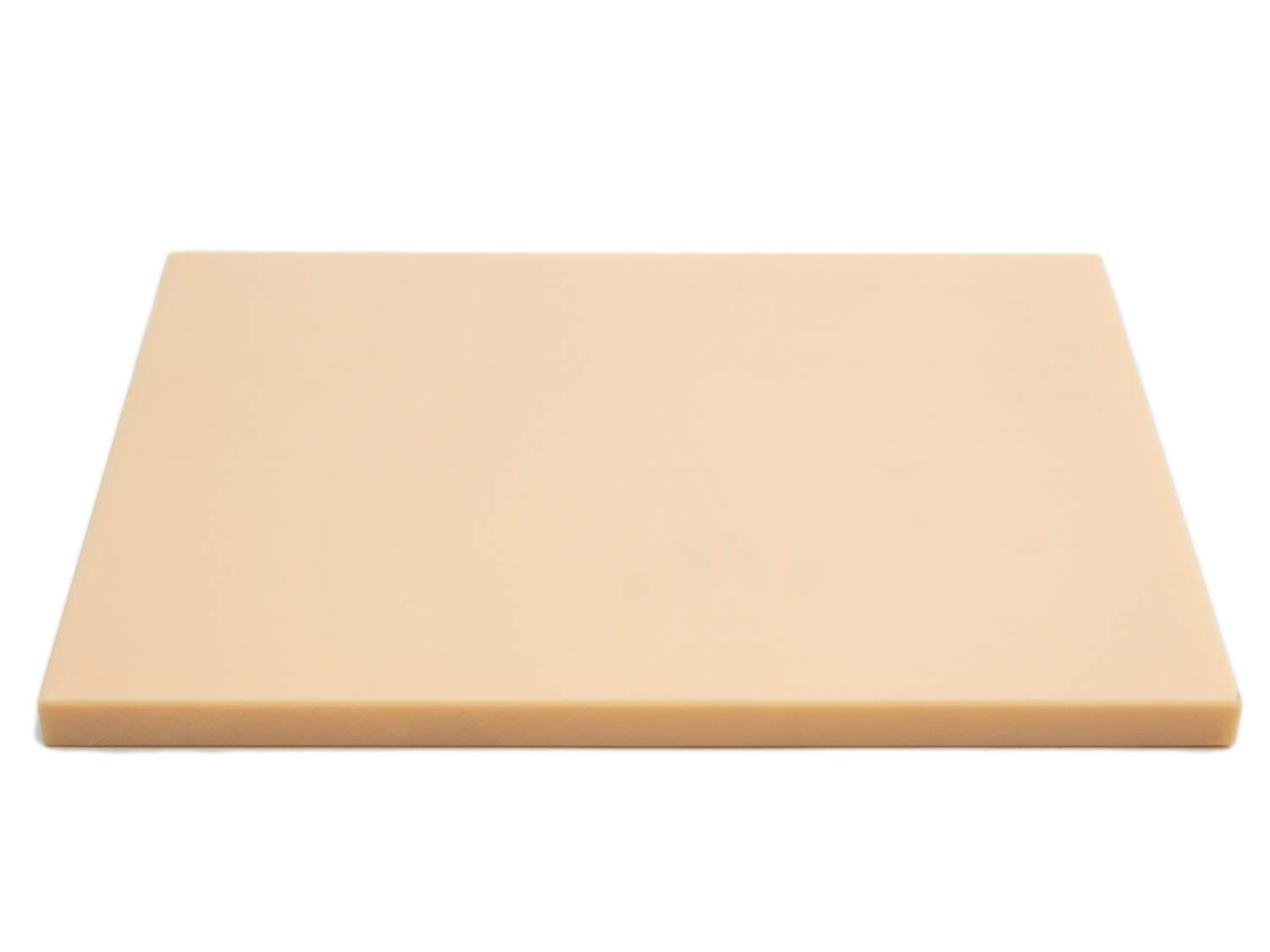
This Japanese cutting board is made from a thermoplastic called polyvinyl acetate. Marketed as Hi-Soft when sold as a cutting board, polyvinyl acetate is, according to Wikipedia, also used to make various glues and, apparently, chewing gum. Thanks to science, it also makes a great cutting board. If you’re looking for an experience that’s close to wood, this is the one to get. (It’s worth noting that Yoshihiro isn’t the only vendor of Hi-Soft boards; you can also buy them from Korin.)
When fashioned into a cutting board, the material is pretty sweet—soft enough to feel absolutely great under a knife but still decently durable, as long as you don’t hack at it recklessly. We did some damage on our review board, but we were also clearly doing things to it that the manufacturer never intended.
Designed to work with razor-sharp Japanese knives and the more gentle pulling motion chefs tend to use in Japan, the Hi-Soft board is only for folks who think they have the knives and knife skills to treat it with care. If you’re a bit of a brute in the kitchen (and no judgement if you are—it’s your home, cut as you please), you probably don’t want to sink your money into one of these. And note, they’re not cheap, especially as they go up in size (but oh, how many sizes there are!).
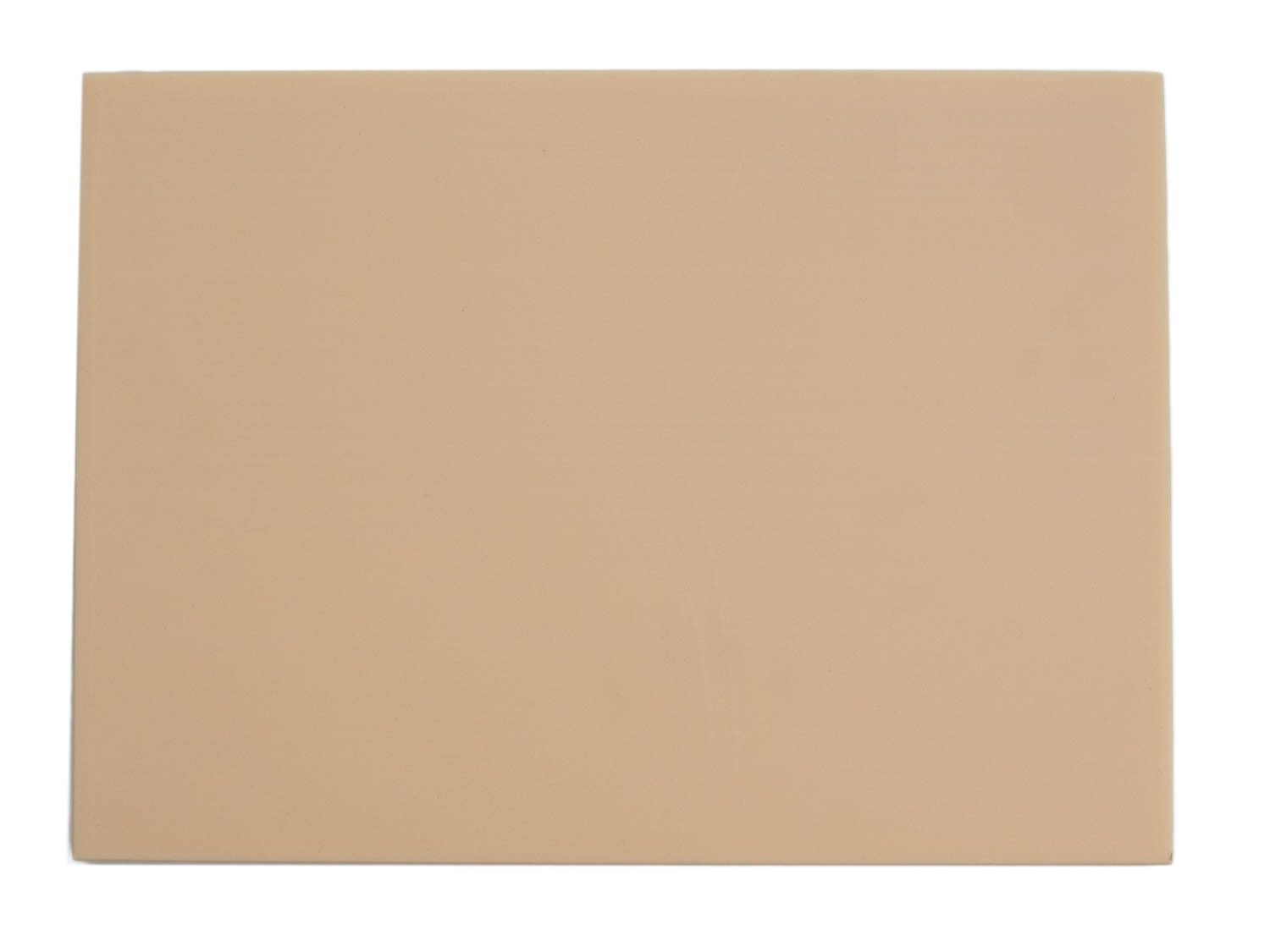
The surface is smooth, but still retains a good deal of slip-resistance. Our squid stayed in place as we sliced through it, which makes sense when you consider that this type of cutting board is often used by sushi chefs who often work with slithery raw fish and seafood.
Note that these boards aren’t dishwasher safe. A gentle hand-washing with warm soapy water is how you have to get them clean. That doesn’t bother us; sure, it’s nice to toss a board in the dishwasher, but a quick wash in the sink shortly after using the board is hardly a chore.
The Competition
Here are notes on the other models we tested for this review:
- HOMWE’s three-piece cutting board set was too hard and too slippery, plus the three sizes are too similar; we found ourselves wanting a truly large board. On top of that, the handle cut-outs just wasted what was already limited board surface area.
- Like the HOMWE boards, Amazon-favorite Gorilla Grips’ three-board set was hard, slippery, and available in three overly similar (and overly small) sizes. It, too, had handle cut-outs that ate up space.
- The Black Slip Resistant Polyethylene Cutting Board sold by Korin did well on early onion and squid tests, and, while potentially awkward for storage, we liked its elongated shape and the ample cutting area it offered. But it shredded to dust when we tested its durability. We could have given it a pass for that—after all, like the winning Hi-Soft board, it’s not meant to be mistreated—but it also dulled our knife blade after 200 strokes, which was a bit too soon for us.
- Similar in appearance to the Hi-Soft board, this rubber option from JB Prince is more or less like Sani-Tuff boards used by some commercial kitchens (pros may recognize the Sani-Tuff name, but home cooks may not). In any event, it performed well up until the knife-blade test, absolutely trashing our blade’s factory edge in under 50 strokes.
This post may contain links to Amazon or other partners; your purchases via these links can benefit Serious Eats. Read more about our affiliate linking policy.
Source link